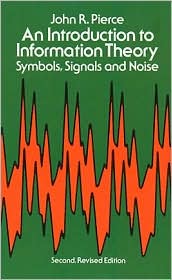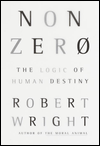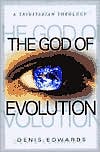Basins of Attraction
Within a dynamical, state-changing system, basins of attraction are formed by "attractors" which guide the system's changes of state into repeating cycles. These "state cycles" may invlove as few as one single state or as many as the total number of states the system can possibly take on — the full size, in other words, of the system's "state space."
Somewhere in between, a suitably low number of states in the length of the system's state cycle makes for a system that is orderly, but not too orderly. Such a system can avoid both chaos — in the guise of a seemingly neverending state cycle in which no state of affairs is ever revisited — and the type of order in which the system is frozen into a single state forever.
Such a short-state-cycle system can evolve gracefully. It exhibits a lovely order amid change.
An attractor is to a basin of attraction as a lake is to its drainage basin. Any initial configuration of the system's "macrostate" — that is, any set of "microstates" of the system's component entities — converges "downhill" toward the attractor associated with the basin of attraction which that particular initial configuration happens to be in.
Eventually, barring "perturbation" or "mutation," the macrostate of the system will reach the associated attractor and churn through its state cycle (whether long or short) endlessly. The more orderly the system, the shorter its state cycle.
A dynamical system can have any number of attractors and associated basins. At any given time, it is in just one basin — though perhaps not yet on the one attractor which forms that basin — but there will be many other attractors and basins which are not actually in play.
The system can be "perturbed" by arbitrarily changing the "activity" of any one of its component entities. In the simplest case, an "on" entity could be arbitrarily switched "off," or vice versa. That minor alteration could put the system in a different basin of attraction. Kauffman finds, though, that if the system is one whose attractors' state cycles are suitably short, chances are it will remain in the same basin of attraction and head back for the same dynamical attractor (see p. 83).
The system can also be "mutated" by changing which entities respond to which others' activity states, or how they respond to those others' states. Again, when the system has state cycles that are suitably short, simple mutations are apt to keep the system in the same basin of attraction.
Mutations will typically cause the underlying layout of basins and attractors to change for the system as a whole. But, if the system has short state cycles, only slightly. This resistance to wholesale reconfiguration means that short-state-cycle systems can evolve readily but gracefully, with an emphasis on stability and an immunity to chaos.
Nature's capacity for self-organization, Kauffman says, is the "handmaiden" of Darwin's natural selection. But Kauffman shows that gracefully evolving short-state-cycle systems habitually find the "edge of chaos," the dynamical province where new order for free can emerge without danger of triggering chaos per se. Or, alternatively, they gravitate to a spot in the ordered regime very near that edge — which of these two possibilities is the correct hypothesis, Kauffman cannot say.
When at (or near) the fecund edge, systems do their most creative adapting, their best fitness-generative evolving. So, how does this happen? What takes them to a regime poised stably away from chaos, but still able to evolve flexibly and gracefully, so to become more fit? Kauffman's experiments with computer models suggest that it is natural selection itself which "tunes" them to the edge of chaos.
If self-organization makes evolvability possible in the first place, by originating the initial life forms on the planet, natural selection "tunes" co-evolution to the best possible combination of stability and flexibility. Self-organization and natural selection, taken together, do the dance of life.
I find such notions irresistible. Perhaps this is because I am, in some abstruse way, in the same intellectual and spiritual basin of attraction as Stuart Kauffman.
That would put William Dembski, author of Intelligent Design, in a different basin of attraction, along with his fellow I.D. proponent Michael Behe.
In yet another basin of attraction is Richard Dawkins, author of The Blind Watchmaker and other books extolling pure Darwinism's ability to explain everything, evolution-wise, without recourse to either self-organization or intelligent design.
I would label these three basins, respectively, the theistic-evolutionist, the creationist, and the atheistic-evolutionist. I say so, even though I don't know whether the "theistic-evolutionist" Kauffman believes in God; I do know that he would like to "reinvent the sacred."
I say it even though Dembski and Behe aren't like those creationists who insist on a six-day special creation, as in the book of Genesis, occurring a mere thousands of years ago, based on counting the generations of the Old Testament.
And I say it even though I realize that not all members of the atheistic-evolutionist set are out-and-out atheists, à la Dawkins. Some are better labeled agnostics, à la the late Stephen Jay Gould.
My point in suggesting that there are three major basins of attraction in the evolution debate is this: it is rare for anyone to hop out of one basin over into another, no matter how much or how well other people may argue for it.
The best I can tell, I was somehow deposited into my particular basin from an early age, before I heard of Charles Darwin, and well before I, as a middle-aged adult, "got religion." So, when I (as a young adult) began to learn of the creation-evolution debate, I was naturally on the side of the Darwinists.
Then, when I embraced Christianity, I embraced a style of faith that was open to the notion of divine action in an evolving world. But with this proviso: no creationism per se, even of the evolution-tolerant variety broached by Dembski, Behe, and others who propose intelligent design. Why not? Creationism is in a different basin of attraction.


















0 Comments:
Post a Comment
<< Home